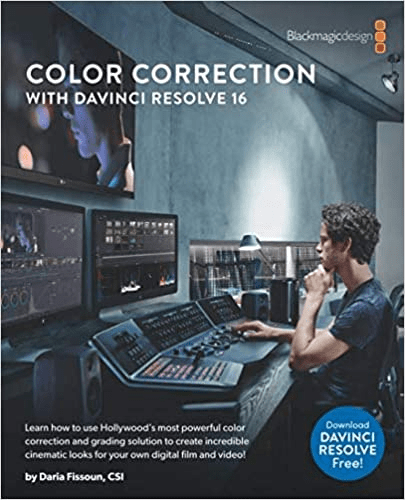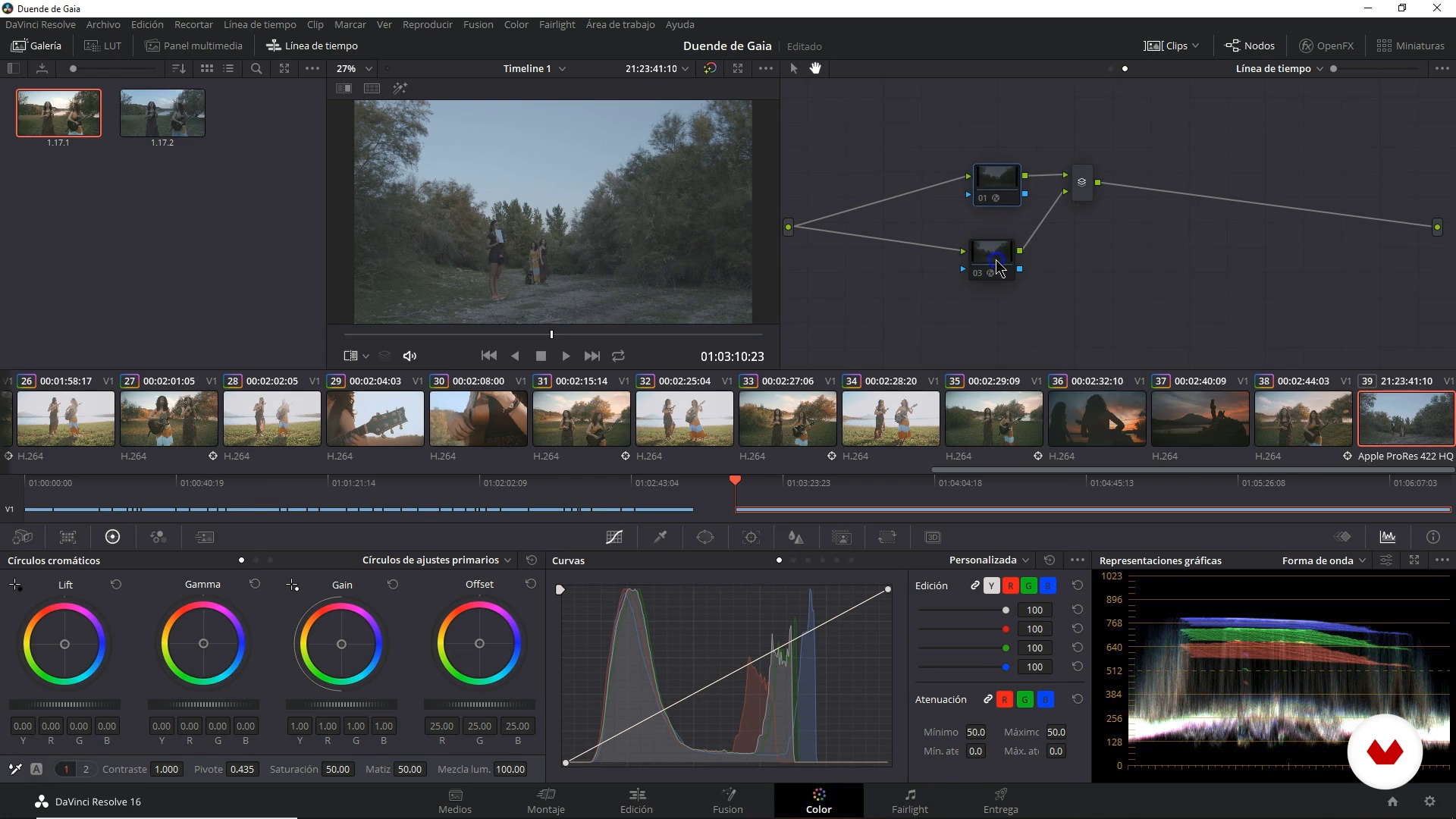



Due to the flat nature of the recorded format, we need to introduce contrast, and we can see that (as in our scope) the tonal range centers in the midtones. I’m going to reset the node and correct the image. This scope, in particular, can help identify problems in your image. If I were to introduce reds into the highlights, we could see the red highlight values increase. Naturally, the top of the graph is the highlight value of the image in the viewer, the bottom is the shadows, and the middle is the midtones. So if I were to lower the shadows, the red, green, and blue values would all drop to reflect the adjustment. The parade displays the RGB values along a vertical graph depicting the highlights and shadows. So, in Resolve, let’s head to the Color Page. One of the very first things we need to do is make our scopes visible, especially the RGB parade, because correcting an image without these is akin to filming a scene without a monitor or recording sound without headphones. That means we won’t be able to make this look like a beautiful summer day without destroying some element of the image data - and without the grade just looking plain silly. The sky is gray, the leaves have fallen from the branches, and the weeds have withered. So it’s not a very colorful image. I filmed this on a cold Welsh morning in early winter. Now, before we start to correct and grade our clip, we have to think about what we can pull off. Or, more simply, it just gives the film a unique feel. If your camera shoots in a log or flat profile, then it may initially be void of contrast and saturation, and the correction would include re-introducing those colors. Grading, on the other hand, is the creative process that gives the image a color cast that wasn’t present in the real world it creates an atmosphere that communicates the tone of the story or location. We’re simply going to cover correcting an image and then grading it. So, first, the difference between correcting and grading.Ĭolor correction refers to the process of correcting any rogue colors or tints that may have been picked up during recording. There’s no quirky angle or complex trick to this tutorial.


 0 kommentar(er)
0 kommentar(er)
